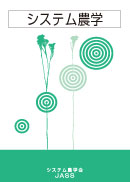
- Issue 4 Pages 59-
- Issue 3 Pages 45-
- Issue 2 Pages 29-
- Issue 1 Pages 1-
- |<
- <
- 1
- >
- >|
-
Kenta ITAKURA, Shuhei NOAKI, Fumiki HOSOI2022Volume 38Issue 2 Pages 29-35
Published: July 25, 2022
Released on J-STAGE: May 18, 2023
JOURNAL FREE ACCESSA fundamental study of autonomous small unmanned aerial vehicle (UAV) flights for application in agricultural fields is conducted in this study. Although some types of UAVs can trail predetermined routes based on GPS information, autonomous flights are difficult to accomplish in small and low-altitude regions. In this study, a UAV is connected to a PC through Wi-Fi to pilot the UAV. The small UAV captures images and then sends them to the PC. The number of fruits in each image is determined based on the recorded images. For fruit detection, a deep-learning method and an image-processing method are compared. Results show that citrus fruits can be detected using both methods, and that the image processing method yields more accurate counting. Total of 151 fruits were over-detected out of 139 using our proposed method using image processing technique. In the result, 14 fruits were counted twice, and some fruits could not detected. The F1 value of the detection was over 0.9, meaning accurate fruit counting via automatic flight of small UAV could be done. However, some deep-learning methods such as YOLOv3 fail to detect some fruits, thereby resulting in an underestimated number of fruits. The YOLOv3 detected only 95 out of the total 139 fruits. Although precision was over 0.9, recall value was under 0.7. Our results suggest that the autonomous flight of small UAVs can afford more efficient as well as laborless monitoring in agricultural fields and houses.
View full abstractDownload PDF (1251K) -
Kento MINAMI, Chinatsu YONEZAWA, Tsubasa OKAZE2022Volume 38Issue 2 Pages 37-42
Published: July 25, 2022
Released on J-STAGE: May 18, 2023
JOURNAL FREE ACCESSHomestead trees are a group of trees surrounding houses that have been maintained for a variety of functions in housing and human life. For example, there are functions for controlling the environment of outdoor spaces, such as windbreaks and solar radiation shielding. In addition, for the role of living materials, woods are used as a building material and fallen leaves are used as a fuel. In the past, homestead trees existed along with houses in many cases. For this reason, the homestead trees, called various names depending on the characteristics of the location, have been found all over Japan since long ago. However, due to the development of cities and changes in lifestyles, the number of homestead trees has been decreasing since the 1970s. This study aims to quantitatively evaluate the windbreak effects of traditional homestead trees in Miyagi Prefecture called "Igune". The flow field around a scattered village-style rural house with 10 m high Igune on the prevailing wind direction side was analyzed by using CFD (Computational Fluid Dynamics) simulation. The shape of the buildings and Igune was captured by referring to a digital surface model constructed with aerial images taken using a drone. LES (Large-eddy simulation), which can directly reproduce wind velocity fluctuations composed of turbulent eddies larger than the computational grid. The aerodynamic effects of the Igune were modeled based on the concept of the vegetation canopy model. The weak region behind the Igune extended downward approximately 10 times the height of the Igune. The mean wind speed on the site was reduced by approximately a quarter of the situation without Igune. In addition, it was found that the 99-percentile low-occurrence strong-wind-speed in the courtyard was reduced to a quarter. It was confirmed that the calm wind environment was formed with Igune.
View full abstractDownload PDF (1780K)
- |<
- <
- 1
- >
- >|